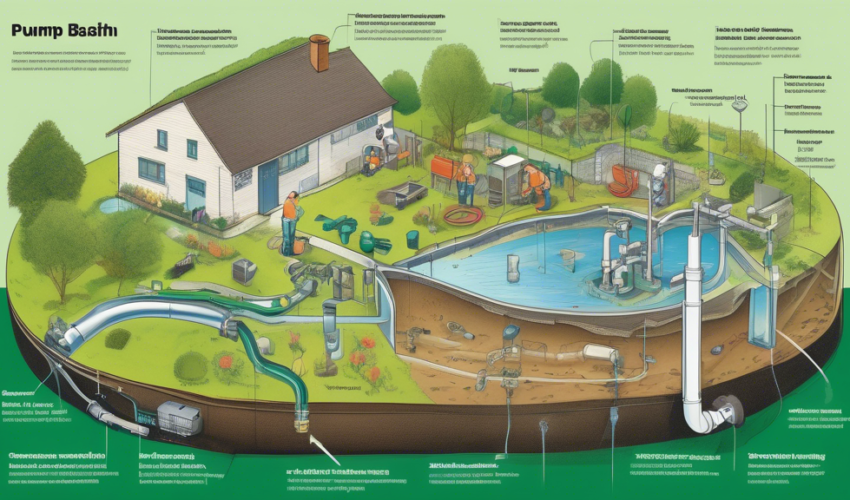What is a Pump Basin?
A pump basin, also known as a sump basin, is a fundamental component often used in plumbing and drainage systems. It is essentially a collection tank where waste water gathers before being pumped out to the main sewer line, septic tank, or surface. These basins are typically found in the lowest part of a basement or crawlspace but can also be located in industrial and municipal wastewater applications.
Purpose of Pump Basins
The primary purpose of a pump basin is to help manage and remove accumulated water and waste, preventing flooding and maintaining a building’s structural integrity. They play a crucial role in homes with basements that are prone to seasonal flooding or where the water table is high. Pump basins are also instrumental in managing greywater from washing machines and sinks in buildings without gravity-fed sewer lines.
Components of a Pump Basin
A typical pump basin setup includes several components: the basin itself, a sump pump, floats or switches, and a lid. The basin is usually made from durable plastic or fiberglass and can range in size from 18 to 24 inches in diameter and 22 to 36 inches deep. The sump pump, which is installed inside the basin, is activated by floats or switches that detect the water level; when the water reaches a certain height, the pump turns on and moves the water out through a discharge line.
Types of Sump Pumps
The two primary types of sump pumps found in residential and commercial settings are submersible and pedestal. Submersible pumps are designed to be waterproof and work efficiently while being fully submerged in water. Pedestal pumps, on the other hand, have their motors located above the water line, which makes them easier to service but less efficient and more obtrusive.
Installation Process
Installing a pump basin is a critical task that requires careful planning and consideration of both location and depth. Here is an overview of the installation process:
- Site Selection: Choose a suitable location for the basin, ideally the lowest point where water collects.
- Excavation: Dig a hole where the basin will be placed. The size of this hole should be larger than the basin to allow for easy installation and maintenance.
- Preparation of the Base: Place a layer of gravel or a similar material at the bottom of the hole to support the basin and facilitate drainage.
- Placing the Basin: Lower the basin into the hole, ensuring it is level and stable.
- Connecting the Pump: Install the sump pump inside the basin, secure it, and connect it to the discharge pipe. Ensure the plumbing follows local building codes.
- Electrical Connections: Hook up the pump to the power supply, using a ground fault circuit interrupter (GFCI) for safety.
- Testing: Test the installation by filling the basin with water and checking that the pump activates and evacuates the water efficiently.
- Cover Installation: Secure a lid on top of the basin to prevent debris from entering, and to reduce noise and moisture evaporation.
Maintenance and Safety Tips
Regular maintenance of your pump basin and sump pump is essential to ensure efficient operation and extend their lifespan. Inspect and clean the basin periodically, check the pump’s operation, and test the floats or switches. Always follow electrical safety guidelines when servicing your pump system, and consider consulting with a professional plumber if unfamiliar with the system.
Conclusion
Pump basins are an integral part of a building’s water management system, particularly in areas susceptible to flooding. Understanding their purpose, installation, and maintenance can help homeowners protect their property from water damage and maintain a dry and functional living space. If you’re planning to install a pump basin, it’s advisable to consult with or hire a professional to ensure that the installation is done safely and correctly.

